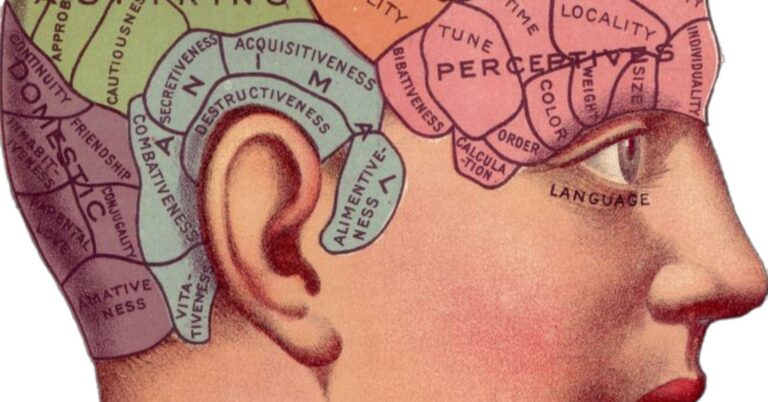One of the most popular posts I’ve written for my Psychology Today blog, Soul Console, is “How to Make Writing a Sacred Practice With ‘Scriptio Divina.’” Scriptio divina is a modern twist on an ancient contemplative practice that can help to heal emotional, spiritual, or existential pain.
As I mentioned in that post, as both a writer and trauma researcher, I’m fascinated by the connection between writing (an act), healing (a process), and health (a state). For two upcoming books (one titled the same as this post and the other Holding Onto Air: The Art and Science of Building a Resilient Spirit), I explored 10 approaches to healing writing that have emerged in recent decades, one of which—embodied disclosure therapy (EDT; DeMarco, 2022)—I developed, specifically for moral injury; scriptio divina was another approach. It was a fascinating project that comprised extant writing therapies, evidenced-based models, and novel approaches, most of which could be done by oneself and a few that recommend oversight by a therapist. While there is overlap among them, there are also important differences. Here is a brief overview of each.
1. Expressive writing. Expressive writing, also known as emotional writing, was the original healing writing developed by James Pennebaker and colleagues after research (1986) showed that expressing one’s deeper thoughts and feelings through writing can result in significant physical and psychological health benefits, such as better immune and pulmonary function, lower blood pressure, reduced anxiety and depression, increased mood, and being more capable of dealing with social life.
The goal of expressive writing is to write about your thoughts and feelings related to a personally stressful or traumatic life experience. Unlike communicative forms of writing, expressive writing is personal, free-flowing, and informal, typically without concern for style, spelling, punctuation, or grammar. The most salient aspect of the process is to link events to emotions to make meaning and feel better.
2. Written exposure therapy. Developed by Denise M. Sloan and Brian P. Marx (2019) for PTSD, written exposure therapy (WET), also referred to as written narrative exposure therapy, is a brief, scripted trauma-focused treatment grounded in imaginal exposure. The goal of WET is to use writing, specifically “let-it-all-go” writing, to engage thoughts and feelings about traumatic memories so that they can be adequately processed. WET was developed as a brief and tolerable post-traumatic stress disorder (PTSD) intervention that could provide greater access to effective treatment in a variety of settings.
Recent studies (Sloan et al., 2022) have shown that WET is a more efficient treatment approach for PTSD than cognitive processing therapy (CPT) and an efficient, well-tolerated, and efficacious treatment for PTSD, generally. WET is typically undertaken in collaboration with a therapist with scripted instructions.
3. Embodied disclosure therapy. Embodied disclosure therapy (EDT), which I developed, is a brief therapeutic approach that integrates body awareness into the writing process, something that appears to have not been used in other writing therapies or as a primary mode of treatment. EDT was purposefully designed to overcome the challenges of expressive writing and other exposure-based writing therapies that use fast-paced, explosive, “let-it-all-go” writing, which have been shown to cause agitation, overwhelm, or retraumatization in certain populations. EDT is adapted from somatic experiencing (SE; Levine, 2012) and WET (Sloan & Marx, 2017).
Initial research findings with people who had moral injury were promising: they suggested EDT significantly reduced moral injury symptomology and increased interoceptive awareness and coregulation. This shift led to more constructive feelings and thoughts about the person’s morally injurious experience and focused them on creating a healing narrative that renewed trust, self-worth, connection, and meaning. Like WET, EDT is brief, cost-efficient, and requires little clinical intervention.
4. Trauma-focused writing. Trauma-informed writing was adapted from trauma-informed care (TIC) and trauma-focused therapy (Northwestern University Feinberg School of Medicine, 2022). The process of trauma-informed writing leverages trauma-informed principles, namely safety, trustworthiness and transparency, support, empowerment, and humility. It also focuses on strengths rather than pathology. The most salient aspect of trauma-informed writing is to ensure that the writing is honest, respectful, and avoids retraumatization. Trauma-informed writing does not need to be undertaken with a therapist.
5. Affirmation writing. Affirmation writing is founded on the notion that negative words and thoughts will contribute to negative emotions and experiences, while positive ones will influence positive feelings and interpretations of life (Rothbaum et al., 2000). It’s also understood that people are motivated to maintain a positive self-view and that threats to perceived self-competence are met with resistance. It’s suggested that when threatened, self-affirmations can restore self-competence by allowing individuals to reflect on sources of self-worth, such as core values (Cascio et al., 2016).
The most salient aspect of affirmation writing is the repetition of words and phrases, as well as the act of writing. A large body of literature shows that affirmation writing can decrease stress, increase well-being, improve academic performance, and make people more open to behavior change [for a review, see Cohen & Sherman, 2014].
6. Mindful writing. Mindful writing uses elements of mindfulness, namely awareness and nonjudgmental acceptance of one’s moment-to-moment experience, to allow a person’s narrative to emerge and be as it is and to meet it with curiosity and kindness (Keng et al., 2011; Duffy & Agnew, 2020). Mindful writing also involves meeting present-moment responses to writing with curiosity and kindness (Duffy & Agnew, 2020). Self-compassion is thought to be essential to healing from trauma or adversity. It’s suggested that mindful writing allows a person to better relate to their traumatic experience, the act of writing, and their self without getting entangled in regret and rumination over what they wish could be changed.
A large body of literature shows that mindfulness produces various positive psychological effects, including increased subjective well-being, reduced psychological symptoms and emotional reactivity, and improved behavioral regulation (Keng et al., 2011).
7. Restorative writing. Restorative writing recognizes the importance of self-in-context and self-in-community, particularly for trauma and in times of adversity (Zamarripa & Marringly, 2018). The goal of restorative writing is to use writing as a vehicle for transforming one’s pain into social/civic engagement as a meaningful part of the healing process. Social engagement is consistently associated with less perceived depression, better self-rated health, and higher quality of life (Luo & Bauman, 2020; Abbott, 2010; Kim et al., 2015).
8. Narrative (or life) writing. Narrative (or life) writing approaches healing as a non-judgmental, non-pathological, meaning-constructing activity. Human beings are understood to give meaning to their experiences, and such meaning influences how they see themselves, others, and the world around them. Because individuals communicate reality, in large part, by language, it is thought that a narrative is essential to maintaining and organizing one’s lived experience.
The goal of narrative writing is to “co-author” life narratives that transform self-expression and meaning-making into a writing practice, which helps a person to integrate, find coherence, and heal. Meaning-making has been shown to decrease stress, increase well-being, improve academic performance, and make people more open to behavior change (Cloninger & Cloninger, 2013; Freda & Martino, 2015). The most salient aspect of narrative or life writing is that in writing and, more specifically, rewriting our stories, we retain authorship over our lives, even in challenging or injurious situations.
9. Processed-focused writing (writing as a practice). Process-focused writing, also referred to as “writing as a practice” (DeSalvo, 2000), starts with the assumption that the simple act of writing can be transformative for people in four key ways: 1) remember who they were and reimagine who they are; 2) discover and fulfill their deepest desire; 3) accept pain, fear, and uncertainty, at the same time find a place of safety, security, serenity, and joyfulness; and 4) claim their voice, tell their story, and share their work as a gift to others, and in so doing enrich and deepen understanding of the human condition.
The goal of process-focused writing is not to create a work of art, but rather to engage with a person’s writing process over time in a way that allows them to discover strength, power, wisdom, depth, energy, creativity, soulfulness as important sources of health and wholeness. The salient aspect of process-focused writing is to write regularly and with intention and commitment to bringing the writing to completion; also, to have unconditional acceptance of their desire to write and that the very act of writing will dispense curative benefits.
10. Scriptio divina. Scriptio divina is an extension of Lectio divina (meaning “divine [or sacred] reading”), a technique handed down through millennia to help readers become immersed in a text. Similarly, scriptio divina considers the act of writing sacred, because it allows a person to engage slowly with what is deepest inside them and what is immediate for them (Paulsell, 1993).
The goal of scriptio divina is to engage writing as a sacred practice that facilitates mind-body-spirit interdependence and “toils the earth of the heart” as a source of revelation, inspiration, and healing. The most salient aspect of scriptio divina is developing an authorial identity, validating one’s role as author, and deepening one’s own experience of existential being.



















+ There are no comments
Add yours